Related Research Articles

Assyria was a major ancient Mesopotamian civilization which existed as a city-state from the 21st century BC to the 14th century BC, then to a territorial state, and eventually an empire from the 14th century BC to the 7th century BC.

Assyriology, also known as Cuneiform studies or Ancient Near East studies, is the archaeological, anthropological, historical, and linguistic study of the cultures that used cuneiform writing. The field covers Pre Dynastic Mesopotamia, Sumer, the early Sumero-Akkadian city-states, the Akkadian Empire, Ebla, the Akkadian and Imperial Aramaic speaking states of Assyria, Babylonia and the Sealand Dynasty, the migrant foreign dynasties of southern Mesopotamia, including the Gutians, Amorites, Kassites, Arameans, Suteans and Chaldeans. Assyriology can be included to cover Neolithic pre-Dynastic cultures dating to as far back as 8000 BC through to the Islamic Conquest of the 7th century AD so the topic is significantly wider than that implied by the root "Assyria”.

Aššur (; Sumerian: 𒀭𒊹𒆠 AN.ŠAR2KI, Assyrian cuneiform: Aš-šurKI, "City of God Aššur"; Syriac: ܐܫܘܪ Āšūr; Old Persian: 𐎠𐎰𐎢𐎼 Aθur, Persian: آشور Āšūr; Hebrew: אַשּׁוּר ʾAššūr, Arabic: اشور), also known as Ashur and Qal'at Sherqat, was the capital of the Old Assyrian city-state (2025–1364 BC), the Middle Assyrian Empire (1363–912 BC), and for a time, of the Neo-Assyrian Empire (911–609 BC). The remains of the city lie on the western bank of the Tigris River, north of the confluence with its tributary, the Little Zab, in what is now Iraq, more precisely in the al-Shirqat District of the Saladin Governorate.

John Percival Postgate, FBA was an English classicist and academic. He was a fellow of Trinity College, Cambridge from 1878 until his death, and also taught at Girton College, Cambridge (1877–1909) and University College, London (1880–1908). Having been passed over for the Chair of Latin at the University of Cambridge, he was Professor of Latin at the University of Liverpool from 1909 to 1920. He was a member of the Postgate family.

Tukulti-Ninurta I was a king of Assyria during the Middle Assyrian Empire. He is known as the first king to use the title "King of Kings".
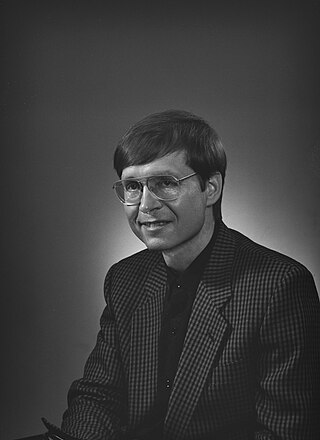
Simo Kaarlo Antero Parpola is a Finnish Assyriologist specializing in the Neo-Assyrian Empire and Professor emeritus of Assyriology at the University of Helsinki.
Aššur-nerari III, inscribed maš-šur-ERIM.GABA, “Aššur is my help,” was king of Assyria. He was the grandson of Tukulti-Ninurta I and might have succeeded his uncle or more probably his father Ashur-nadin-apli to the throne, who had participated in a conspiracy against Tukulti-Ninurta I which led to his murder.

Eriba-Adad, inscribed mSU-dIM or mSU-d10, was king of Assyria from c. 1390 BC to 1364 BC. His father had been the earlier king Aššur-bel-nišešu, an affiliation attested in brick inscriptions, king-lists and a tablet although a single king list gives his father as Aššur-rā’im-nišēšu, probably in error. He succeeded his nephew, Aššur-nādin-aḫḫe II, being succeeded himself by the rather more prominent king Aššur-uballiṭ I, who was his son. He was the 72nd on the Assyrian King List and ruled for 27 years.
Henry William Frederick Saggs was an English classicist and orientalist.
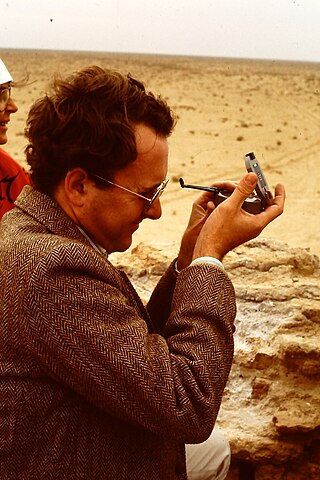
Jeremy Allen Black was a British Assyriologist and Sumerologist, founder of the online Electronic Text Corpus of Sumerian Literature.

Marduk-šāpik-zēri, inscribed in cuneiform dAMAR.UTU-DUB-NUMUN or phonetically -ša-pi-ik-ze-ri, and meaning “Marduk (is) the outpourer of seed”, reigned c. 1077–1065 BC, was the 7th king of the 2nd dynasty of Isin and 4th dynasty of Babylon and he ruled for thirteen years. His relationship with his predecessor, Marduk-nādin-aḫḫē is uncertain. His reign overlapped that of the Assyrian king Aššur-bēl-kala and his immediate predecessor(s) as the Synchronistic King List places him alongside both Tukultī-apil-Ešarra and Aššur-bēl-kala.
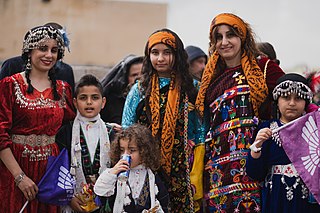
Assyrian continuity is the study of continuity between the modern Assyrian people, a Semitic indigenous ethnic, religious and linguistic minority in the Middle East, and the people of ancient Assyria and Ancient Mesopotamia in general. Assyrian continuity and Mesopotamian heritage is a key part of the identity of the modern Assyrian people. No archaeological, genetic, linguistic or written historical evidence exists of the original Assyrian and Mesopotamian population being exterminated, removed, bred out or replaced in the aftermath of the fall of the Assyrian Empire, modern contemporary scholarship "almost unilaterally" supports Assyrian continuity, recognizing the modern Assyrians as the ethnic, linguistic, historical and genetic descendants of the East Assyrian-speaking population of Bronze Age and Iron Age Assyria, and Mesopotamia in general, which were composed of both the old native Assyrian population and of neighbouring settlers in the Assyrian heartland.

The Postgate family is an English family that has been notable in a variety of different fields. It originated in the North York Moors and records go back to land held by Postgates in 1200. Fields and a farm bearing the name still exist. The name is rare outside Yorkshire.
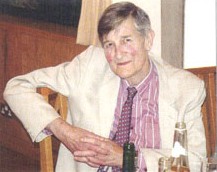
Edward Ernest David Michael Oates,, known as David Oates, was a British archaeologist and academic specializing in the Ancient Near East. He was director of the excavations at Nimrud from 1958 to 1962, Tell al-Rimah from 1964 to 1971 and at Tell Brak from 1976 to 2004. He was Professor of Western Asiatic Archaeology at the Institute of Archaeology from 1969 to 1982 and Fellow of the McDonald Institute for Archaeological Research from 1997 to 2004.
Joan Louise Oates, FBA was an American-British archaeologist and academic, specialising in the Ancient Near East. From 1971 to 1995 she was a Fellow and tutor of Girton College, Cambridge, and a lecturer at the University of Cambridge. From 1995 she was a Senior Research Fellow of the McDonald Institute for Archaeological Research. From 2004 she was director of the excavations of Tell Brak, having been co-director, with her husband, David Oates, between 1988 and 2004.
Stephanie Mary Dalley FSA is a British Assyriologist and scholar of the Ancient Near East. Prior to her retirement, she was a teaching Fellow at the Oriental Institute, Oxford. She is known for her publications of cuneiform texts and her investigation into the Hanging Gardens of Babylon, and her proposal that it was situated in Nineveh, and constructed during Sennacherib's rule.
Sidney Smith was an Assyriologist who has been described as the architect of Mesopotamian studies.
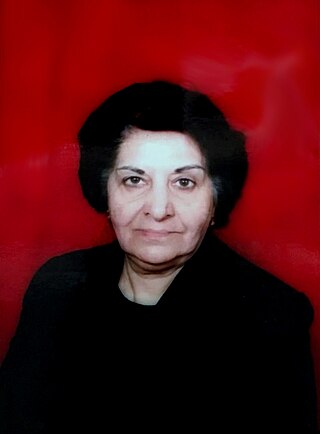
Bahija Khalil was an Iraqi Assyriologist and director of the Iraq Museum from 1983 to 1989. She was the first woman director of the museum.
Theodore Kwasman is an American Assyriologist and professor for Jewish studies. He is best known for his discovery of the first lines of the Epic of Gilgamesh.
References
- 1 2 "POSTGATE, Prof. (John) Nicholas" . Who's Who . Vol. 2014 (online edition via Oxford University Press ed.). A & C Black.(Subscription or UK public library membership required.)
- 1 2 3 4 5 6 7 8 9 "(John) Nicholas POSTGATE". People of Today. Debrett's. Retrieved 23 January 2016.
- 1 2 "Ad Portas" (PDF). Winchester College. 14 May 2011. Retrieved 14 February 2014.
- 1 2 3 "POSTGATE, Professor Nicholas". British Academy Fellows. The British Academy. Archived from the original on 22 February 2014. Retrieved 14 February 2014.
- ↑ "Trinity Annual Record 2013" (pdf). Trinity College, Cambridge. Retrieved 14 February 2014.
- ↑ Zaybāri, Akram; Dijk, J. J. A. van (1964). Texts in the Iraq Museum: Texts from Niniveh, by Nicolaus Postgate, Bahija Khalil Ismail. Directorate General of Antiquities.
- ↑ "Teaching & Research Staff". Division of Archaeology. University of Cambridge. Retrieved 26 February 2014.